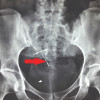
 IJCP Editorial Team
IJCP Editorial Team
ESGO/ISUOG/IOTA/ESGE Consensus Statement on pre-operative diagnosis of ovarian tumors
Joint efforts of The European Society of Gynaecological Oncology (ESGO), the International Society of Ultrasound in Obstetrics and Gynecology (ISUOG), the International Ovarian Tumour Analysis (IOTA) group, and the European Society for Gynaecological Endoscopy (ESGE) materialized clinically relevant and evidence-based statements regarding the pre-operative diagnosis of ovarian tumors, including imaging techniques, biomarkers, and prediction models. ESGO/ISUOG/IOTA/ESGE nominated 19 experts across Europe along with a patient representative in the group. They ensured the statements were evidence-based by reviewing and critically appraising the current literature.
The group achieved consensus on 18 statements, which are summarized as follows-
Ultrasonography is the recommended initial step to categorize patients with symptoms suggestive of an adnexal mass and patients with an incidental spotting of an adnexal mass while imaging. On ruling out the normal ovaries and physiological changes (ie, rules out O-RADS 1) by the scan, the IOTA ADNEX model comes as the next step to determine the risk of malignancy. In the case of a suspected ovarian mass, every ultrasonographic examination should be performed by an expert sonographer. This categorization of the lesion will further guide the management and selection of patients for referral to a dedicated gynecological oncology center.
The consensus also illustrates further steps necessary to differentiate between sub-groups of malignancy and the extent of disease within gynecological oncology centers. Ultrasound examination by an expert or applying the IOTA ADNEX model along with the tumor marker profile (CA 125 and CEA, complemented with other markers in specific cases) often underlines the specific sub-type of malignancy. If available, diffusion- and perfusion-weighted MRI should be used to confirm the diagnosis of the primary lesion, especially in cases considering fertility-sparing surgery. A chest CT, abdominal CT, and pelvic CT are must before planned surgery for presumed malignancy, to exclude secondary cancers, thromboembolic events, and multifocal intraparenchymal distant metastases that may prevent resectability.
The final management and treatment must be within an expert multidisciplinary setting, considering both the diagnostic findings and the overall patient profile, including symptoms, patient preferences and prior surgical, medical and reproductive history, with the ultimate purpose of determining an individualized approach for every patient.
SOURCE- Timmerman D, Planchamp F, Bourne T, et al. ESGO/ISUOG/IOTA/ESGE Consensus Statement on pre-operative diagnosis of ovarian tumors. Int J Gynecol Cancer. 2021;31(7):961-982. doi:10.1136/ijgc-2021-002565

IJCP Editorial Team
Comprising seasoned professionals and experts from the medical field, the IJCP editorial team is dedicated to delivering timely and accurate content and thriving to provide attention-grabbing information for the readers. What sets them apart are their diverse expertise, spanning academia, research, and clinical practice, and their dedication to upholding the highest standards of quality and integrity. With a wealth of experience and a commitment to excellence, the IJCP editorial team strives to provide valuable perspectives, the latest trends, and in-depth analyses across various medical domains, all in a way that keeps you interested and engaged.












Please login to comment on this article